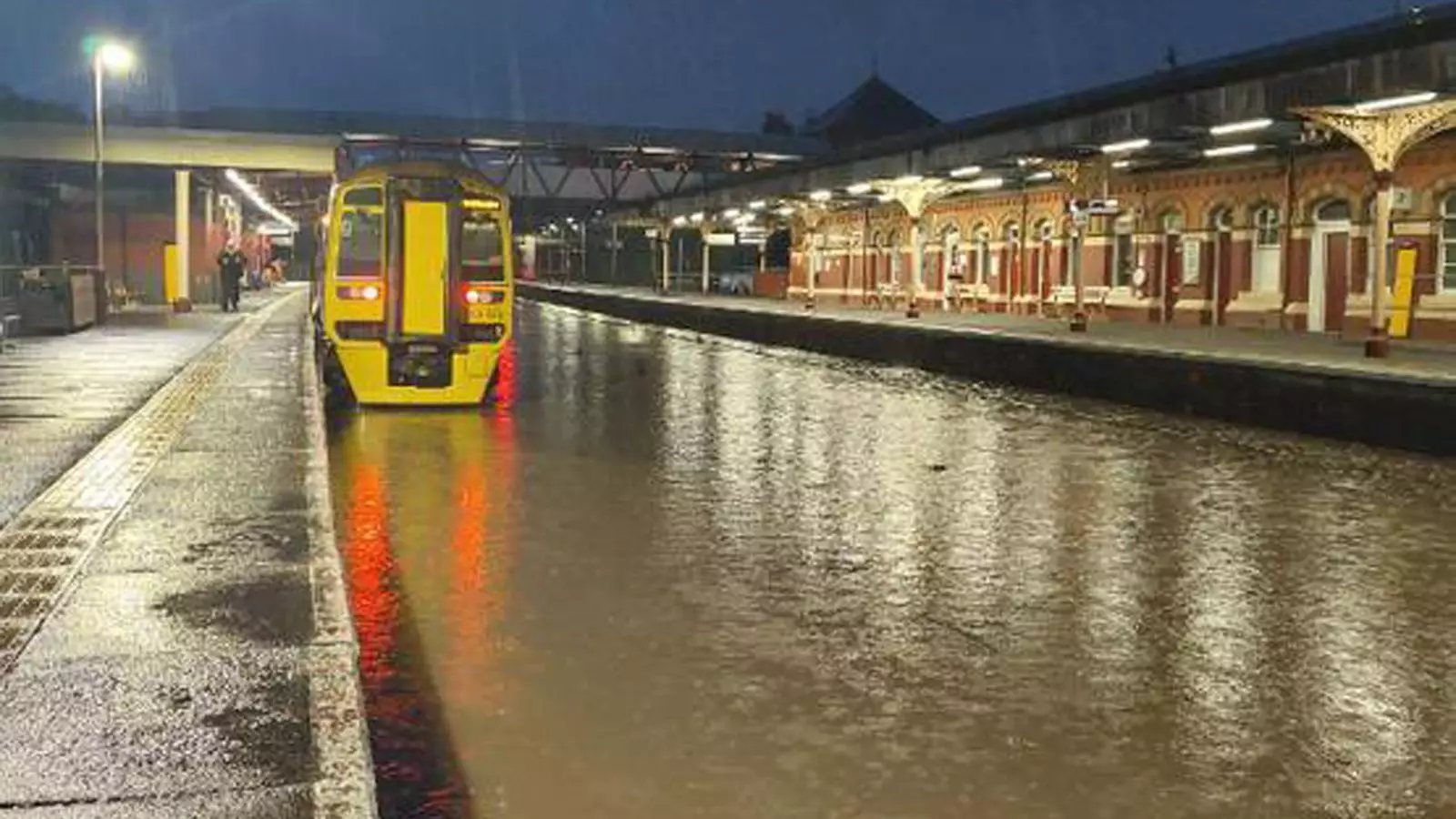As torrential rains have blanketed England, the nation is grappling with severe flooding, prompting over 180 flood warnings and alerts from concerned meteorological and environmental agencies. Regions in the north and central parts of England, alongside parts of Wales, have faced the brunt of this deluge, leading to significant travel disruptions and safety concerns. How did this situation arise, and what are the ongoing implications for residents and travelers?
The aftermath of heavy rainfall has created extensive travel challenges, particularly in urban areas such as Milton Keynes, Oxfordshire, and the West Midlands. Commuters faced significant hurdles this morning, with rail services suspended or heavily delayed due to flooding and fallen trees on tracks, especially in areas like Shropshire. Images shared on social media vividly depicted submerged railway stations and abandoned vehicles caught in the relentless downpour, illustrating the severity of the conditions faced by the public.
Many travelers planning their journeys on Friday were advised to consider the impact of these disruptions on their schedules. The Environment Agency’s warnings indicate an ongoing threat of flooding, highlighting the precarious situation for thousands affected by road closures and rail service disruptions.
The categorization of flood warnings is essential to understand the gravity of the situation. Currently, there are 66 flood warnings across England that signify expected floods and another 119 alerts that denote the potential for flooding. This classification plays a critical role in preparedness and response efforts for local authorities and residents. Meteorologists note that even as some warnings were officially lifted, the effects linger significantly due to already saturated ground conditions which facilitate localized flooding.
Emergency services are on high alert, with multiple rescue operations taking place. For instance, Avon Fire and Rescue Services reported efforts to save individuals stranded on major roads, including the M5 motorway, which remains closed due to high water levels. Local councils, like Tewkesbury Borough Council, have proactively distributed sandbags to assist residents in safeguarding their homes against incoming water. This demonstrates a coordinated response effort, although the challenges remain grave.
Emergency funds and resources have become crucial as communities rally to maintain safety and order. Local governments are pivotal in these situations, ensuring that vital infrastructure remains operational while also addressing the needs of affected residents.
Looking ahead, while the Met Office forecast predicts an easing of the heavy rains, the transition to more severe weather conditions looms. The potential for colder weather this weekend may lead to further complications, such as icy conditions or additional water runoff, carrying its own set of risks. Rivers and waterways, still swollen from the last bout of rain, can take time to return to normal levels, prolonging the threat of ongoing flooding.
Ultimately, the recent flooding in England acts as a stark reminder of the need for long-term strategies to combat climate change and its associated impacts. Residents, local governments, and businesses must engage in planning efforts that include improved drainage systems, flood defenses, and community education on emergency preparedness.
The government’s commitment to addressing infrastructure resilience will be tested as communities begin to recover from this latest weather ordeal. The significance of such disasters compels immediate action, as rainfalls escalate in both frequency and intensity as climate patterns shift.
As England navigates the challenges of flooding and its aftermath, the importance of community readiness, reliable forecasts, and the swift action of emergency services cannot be overstated. This weather crisis serves as an opportunity for reflection and reform, pressing the nation to strategically prepare for future events that may equally threaten public safety and economic stability. Engaging in proactive measures today will better equip the country for the unpredictable weather of tomorrow.

Leave a Reply